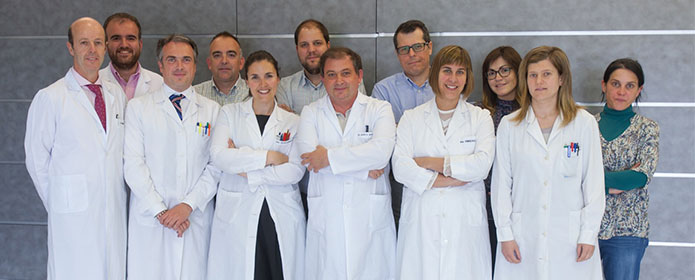Researchers at CIMA and the Clínica Universidad de Navarra design an effective molecule for the treatment of leukemias and lymphomas
It improves the survival rate in animal models and may be a therapeutic strategy for patients with hematologic malignancies with a poor prognosis

Researchers at the Center for Applied Medical Research (CIMA) and the Clínica Universidad de Navarra have identified a molecule that improves the survival rate in animal models with acute leukemia and lymphomas. The results, published in the latest issue of the scientific journal Nature Communications, offer a therapeutic strategy for patients with hematologic malignancies with a poor prognosis.
The treatment of hematologic tumors has an innovative approach thanks to the administration of epigenetic drugs. They are based on molecular modifications which alter the activity of the genes in the development of the cancer. “In this context, we have designed a molecule, CM-272, which blocks the activity of two epigenetic enzymes involved in the development of different types of tumors, histone methyltransferases (G9a) and DNA methyltransferase (DNMT1) simultaneously. As a result, it induces the cell death of acute myeloid leukemia, acute lymphoblastic leukemia and non-Hodgkin lymphoma. The studies carried out show that CM-272 can increase survival in in vivo models of these tumors”, explained Dr. Julen Oyarzabal, director of the CIMA Molecular Therapy Program, and Dr. Felipe Prósper, co-director of the Hematology Service at the Clínica Universidad de Navarra.
A safer and more effective therapeutic approach
The results of this study, confirmed in animals, are a fundamental first step in the development of new compounds as a possible treatment for patients with these tumors, and would act as a strategy that is complementary to current treatments. According to the researchers, “CM-272 presents as a selective drug and represents a new, safer and more effective therapeutic approach for hematologic tumors which at present have a poor prognosis”.
From this point on, the research will focus on optimizing the compounds for their clinical development, and will examine the possibility of combining them with other treatments along with identifying other tumors which may be treated by means of this therapy.
*Article: Nature Communications 8, Article number: 15424 (2017) doi:10.1038/ncomms15424
